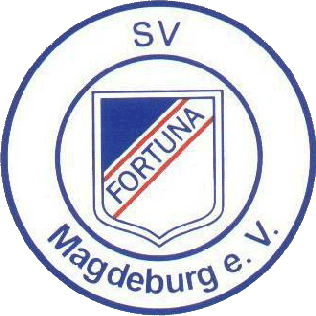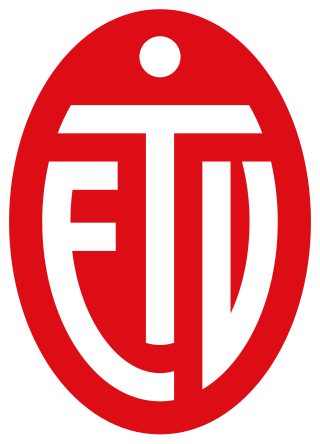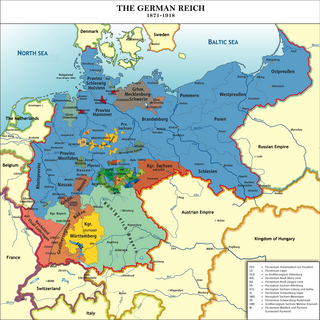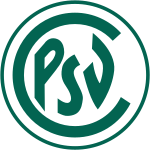
Chemnitzer Fußballclub e.V. is a German association football club based in Chemnitz, Saxony. The club competes in Regionalliga Nordost, the fourth tier of German football.

Dresdner Sportclub 1898 e.V., known simply as Dresdner SC, is a German multisport club playing in Dresden, Saxony. Founded on 30 April 1898, the club was a founding member of the German Football Association in 1900. The origins of the club go back still further to the predecessor side Dresden English Football Club formed in 1874 by expatriate Englishmen as Germany's first football club and possibly the earliest in continental Europe: Dresdener SC was organized by one-time German members of the EFC.

VfB Lübeck is a German association football club playing in Lübeck, Schleswig-Holstein in the country's north. In addition to its football side the 1,000 member sports club also has departments for badminton, women's gymnastics, handball, and table tennis.

Chemnitzer BC was a German association football club playing in Chemnitz, Saxony. The club was established 2 December 1899 as Chemnitzer Sportclub Britannia and was a founding member of the German Football Association at Leipzig in 1900.

SV Fortuna Magdeburg is a German association football club from the city of Magdeburg in Saxony-Anhalt.

The Gauliga Saxony was the highest football league in the German state of Saxony (German:Sachsen) from 1933 to 1945. Shortly after the formation of the league, the Nazis reorganised the administrative regions in Germany, and the Gau Saxony replaced the state Saxony.

Eimsbütteler Turnverband is a German sports club based in Eimsbüttel, Hamburg. Apart from football, the club also offers a variety of other sports, like basketball, volleyball, and fencing. The club's golden era was in the 1930s and early 1940s when it made five appearances in the German championship finals round and won a number of Hamburg city championships against the now much more prominent clubs Hamburger SV and FC St. Pauli.

The Central German football championship was the highest association football competition in Central Germany, in what is now the federal states of Saxony, Saxony-Anhalt and Thuringia, established in 1902. The competition was disbanded in 1933 with the rise of the Nazis to power.

Stadion an der Gellertstraße is a single-use football stadium in Chemnitz, Germany and the home stadium of Chemnitzer FC. Between 1950 and 1990, the stadium was called "Dr.-Kurt-Fischer-Stadion". The stadium was later nicknamed the "Fischerwiese".
The 1936 German football championship, the 29th edition of the competition, was won by 1. FC Nürnberg by defeating Fortuna Düsseldorf 2–1 after extra time in the final. It was Nuremberg's sixth championship and its first since 1927. Fortuna Düsseldorf made its second final appearance, having previously won the competition in 1933 but, after 1936, the team would never appear in the final again. Nuremberg had eliminated the champions of the previous two seasons, Schalke 04 in the semi-finals, making 1936 the only final from 1933 to 1942 not to include the club. Schalke however would return to its winning ways the following season when it defeated Nuremberg in the 1937 final.
The 1939 German football championship, the 32nd edition of the competition, was won by Schalke 04, the club's fourth German championship by defeating Admira Wien 9–0 in the final, with Ernst Kalwitzki scoring five goals. For Admira it was the club's only appearance in the German championship while the 9–0 result was the highest winning margin for any of the finals held between 1903 and 1963, surpassing VfB Leipzig's 7–2 victory over DFC Prag in the inaugural 1903 final. For Schalke, it continued the club's most successful era, having won the 1934, 1935 and 1937 final and going on to win the 1940 and 1942 ones as well.
The 1943 German football championship, the 36th edition of the competition, was won by Dresdner SC, the club's first-ever championship, won by defeating FV Saarbrücken in the final.

The 1933–34 Gauliga was the inaugural season of the Gauliga, the first tier of the football league system in Germany from 1933 to 1945.

The 1934–35 Gauliga was the second season of the Gauliga, the first tier of the football league system in Germany from 1933 to 1945.

The 1935–36 Gauliga was the third season of the Gauliga, the first tier of the football league system in Germany from 1933 to 1945.

The 1938–39 Gauliga was the sixth season of the Gauliga, the first tier of the football league system in Germany from 1933 to 1945. It was the last completed season before the Second World War.

The 1939–40 Gauliga was the seventh season of the Gauliga, the first tier of the football league system in Germany from 1933 to 1945. It was the first season held during the Second World War.

The 1940–41 Gauliga was the eighth season of the Gauliga, the first tier of the football league system in Germany from 1933 to 1945. It was the second season of the league held during the Second World War.

The 1942–43 Gauliga was the tenth season of the Gauliga, the first tier of the football league system in Germany from 1933 to 1945. It was the fourth season of the league held during the Second World War.
Erwin Helmchen was a German footballer who played as a striker. He is the most prolific goalscorer in official matches in recorded history according to RSSSF with at least 987 goals scored in 577 official matches, as well as the second goalscorer in league matches with over 720 goals, the second-most prolific goalscorer for a single team in official matches with at least 667 goals and the goalscorer with most career hat-tricks with at least 141.









